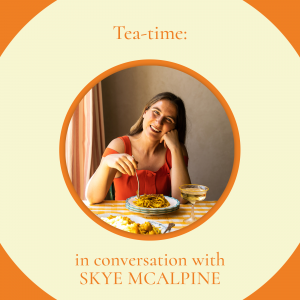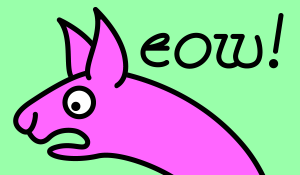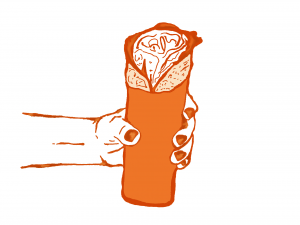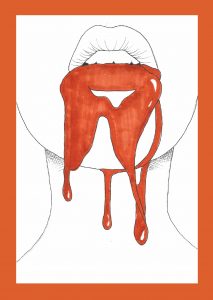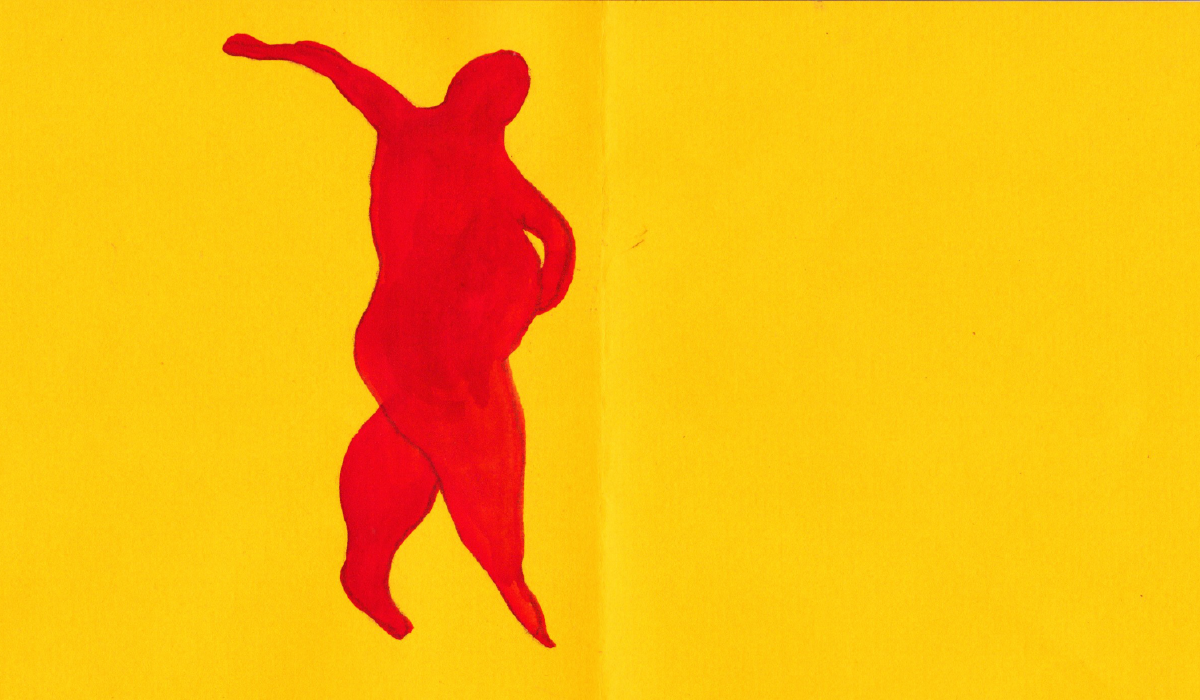
Can Speak Singlish?
by Claire Soh | April 22, 2018
There are two sides to every story. Mine are translated – not into another language, but into another English.
Feeling scarred after a particularly nightmarish tutorial, I sit down in college hall with an overflowing tray of pie and mash and proclaim my sorrows to an understanding friend. “I’m so anxious and stressed about my essays. And everyone is anxious and stressed too, which makes it even worse. And I can’t endure this food much longer. I really want to go to London for some Singaporean food, but it’s so inconvenient to make the trip!”
She nods sympathetically as I pick at the lumpy, powdery mound. “You’re going home this winter, aren’t you? Not long more until you can get your food!”
“I know, I’m so excited! Flight prices are crazy though… we’re really hoping they’ll drop soon. Seven hundred pounds is a bomb! Just three weeks more; I’m hoping for the best.”
We chat idly about plans for the winter until she leaves for a class, and I’m left alone at the table until friends from home sit down.
“I can’t tahan the food any longer, guys. But going to London just for food is so lecheh.”
“There’s no time to go,” one of them replies. “Everyone is too gan cheong about work and internship applications. Where got time? Anyway we’re going home soon.”
“Aiyoh, I haven’t even booked my flight tickets. You said the prices will drop right? Is your prediction zhun or not?
“I hope so lah. If not no choice already.”
“Seven hundred pounds seems like the lowest leh. Maybe I should just book now.”
By the time we’re done, the hall is nearly empty, and our accents are the only sound occupying the expansive space. Against the backdrop of towering stained glass murals and paintings of former Provosts, I’m seized by the awareness that I’m foreign. I don’t speak with a British accent, can’t appreciate pie and mash, and will never feel comfortable using the word “cheers”. Yet, sitting with my friends and conversing in a code only we can fully understand, I’ve never felt more unabashedly Singaporean. The irony couldn’t be greater: all thanks to the power of language, I was able to fully assert my identity in a city 7000 miles (and multiple flights) away from home.
It seems easy to replicate home in Oxford. I grew up speaking English, spent most of my lifetime in the British-style education system, and listened to Girls Aloud and S Club 7 on repeat – so wouldn’t I be a perfect fit for this country? There’s excellent Singaporean food at Zheng’s on Walton Street, and the hottest weeks of Trinity term vaguely resemble our blistering tropical heat. Plus, so many Singaporeans study at Oxford that daily run-ins are inevitable. And yet, no common childhood experiences or elaborate reconstructions of home can compare to the ecstasy of slipping into Singlish, where our vowels blend into one another, consonants are dropped rapidly, and we’re enveloped in a dense network of unexplainable vocabulary and impenetrable syntax.
Singlish is not merely a creole Singaporeans converse in, but a performance of our identities, and an embodiment of home. Previously desensitised to Singlish after years of hearing it back home, I found that the unfamiliar linguistic landscape of Oxford ignited my pride in the creole – and Singapore – almost immediately. Slipping into Singlish is our refuge from the linguistic expectations we fulfil but never truly inhabit, and grounds us in where we’re from, where life is similar but will never be quite the same.
Our tiny island nation is rich in its history and diversity. The British landed on our shores in 1819, where English rapidly rose in prestige, and remained the language of administration even after we gained self-government and independence in the mid-20th century. A country of four races needed a unifying language, and English was the intuitive and economically pragmatic choice – but ethnic languages (Chinese, Malay and Tamil) prevailed alongside it as the country’s other national languages, which dominated intra-race conversations. Languages were mixed and used interchangeably, leading to the creation of Singlish: a portmanteau of Singapore and English, and an emblem of our cultural hybridity.
Chinese and Malay syntax distort the grammar of Standard English sentences – so that simple questions like “Is there sugar here?” take on new life when rephrased with Malay syntax: “here got sugar or not?” We borrow plenty of words from Chinese dialects (“zhun” for “accurate”, “gan cheong” for “anxious”), and have integrated Malay words into our lexicon (“makan” for “eat”, “tahan” for “endure”). Chinese dialects also gave us clause-final discourse particles, arguably the emblems of Singlish, such as the famous “lah” and “leh”, which add emphasis to the ends of sentences. We incorporate these words and grammatical norms into daily conversation with ease, and the linguistic walls between races break down as we speak in a common tongue that’s intuitive to us, and almost impenetrable to outsiders.
This colourful hodge-podge of languages, confusing and “ungrammatical” to the unsuspecting listener, is not simply a perverted form of the English language. It’s the result of fifty years of history and an ongoing search for our national identity, where Singlish has prevailed over bizarre-looking cartoon characters and disputes with neighbouring Malaysia over the origins of famed national dishes. Yet the tension between Standard English and Singlish bubbles constantly, although it is not of the people’s making. The Singapore government is keen on promoting Singlish as an incorrect form of English, and posters for the nationwide ‘Speak Good English Movement’ assertively corrected Singlish sentences into Standard English ones. Teachers are eager to point out that Singlish is not acceptable in submitted essays.
However, to argue that Singlish is an “incorrect” version of English ignores the fact that different languages and creoles have different sets of grammar and rules – and Singlish has hence been unjustifiably vilified as an obstacle to improving one’s Standard English. Singlish is not a competitor of Standard English, but merely a different form of the language, and one that we embrace as a more accurate representation of our linguistic identities. Lesley Milroy argues that Singaporeans occupy different positions on a post-creole continuum, ranging from acrolectal Standard English to basilectal Singlish, with most falling into the mesolectal zone. We switch seamlessly between the two, and most of the time, fall easily into middle ground, negotiating and code-switching our way through different facets of daily life.
Standard English is the stuff of textbooks, documents and newspapers; the meat of our school essays, and in the crisp accents of our politicians and radio DJs. We rely on it to reach the world outside our densely populated shores, and bring it with us as we wander foreign lands. Perhaps we don’t have the most veritable of vocabulary or precise grammatical rules, but what we do have is certainly enough for survival in a world where speaking English still opens the most doors. In this mode, I’m careful and deliberate with my words; I give myself extra seconds to emphasise my consonants, replace “tahan” with its English equivalent (endure), and remember not to interject with a heavy-handed Singlish accent. I know this English like the back of my hand, but my rawest joy and anguish elude capture. I need Standard English to survive, but I also need more.
As much as it is tempting to revere Standard English for its economic and pragmatic value, we need Singlish because it’s the embodiment and expression of who we are. Singlish is not something to be malu about; we should be more garang and proud. It is just as cheem as English – not following Standard English norms doesn’t make it less complicated. Anyone who says that we can’t have Singlish is doing it wrong leh; like suggesting we ban our favourite dishes like char kway teow or Hokkien mee, and erasing a part of our identity. My ang moh friends in college won’t understand me if I talk like this when I makan in hall, but it doesn’t matter lah; as long as my fellow Singaporeans understand me, then okay, because this is how we Singaporeans speak to each other! My accent will become more warm and natural one, and I talk faster and with more drama. I don’t have to wayang and sound fake, because speaking Singlish is less jialat and tiring than only Standard English. No matter what the gahmen may say about Singlish being “wrong”, it will never be wrong to us.
Singlish is the heartbeat of Singapore – the chaos of a crowded hawker centre, jostle during morning rush hour at Raffles Place, and hearty chats with friends over kopi and kaya toast. Our ears gravitate to other Singaporean accents in foreign lands, its melodious sound a source of comfort when feeling suaku as a first-time tourist. And just when you think you tak boleh tahan your heavy workload, there’s nothing quite like a dramatic yet simple “aiyoh” to induce sympathy and solidarity with a friend. Standard English represents our hopes and ideals as a nation, while Singlish is who we are right now, a nation in progress and forging her unique identity, with a secret linguistic code that unites us in our cultural richness and shared heritage.
I live in between two Englishes – one for the girl spreading her wings in tutorial rooms and chatting over pie and mash far from home, and the other to take me back when I wander. When I can’t be at home, language is my homeland. There’s no need to be one or the other, because this is who we are, and I’ll proudly proclaim to the cynics, “this is the way we speak in Singapore lah!”
Artwork by: Georgiana Wilson
